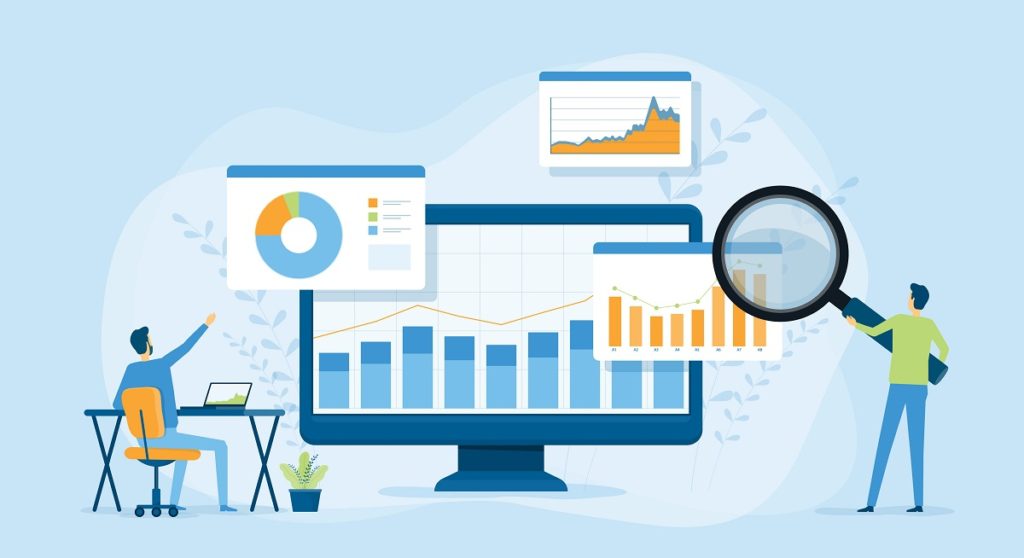Google’s next generation of analytics is on the way. Learning about GA4 now will help set you up for success when it goes live.

Google has made it clear. The future is Google Analytics 4 (GA4) – and that future starts July 1, 2023. That’s when Google will begin phasing out Universal Analytics (UA) and replacing it with GA4 as its default digital analytics measurement tool.
GA4 will be the only way to use Google’s data analytics for standard UA users as of July 1 and UA 360 users as of Oct. 1. Until then, brands can use both UA and GA4 in the same Google Analytics account to help ensure a smooth transition – something Google recommends.
The world’s favorite search engine introduced Google Analytics (GA) in 2005. Since then, much like Google itself, GA has become the most popular web analytics tool around the globe, providing insights into web traffic and user behaviour.
In 2013, Google released the much improved UA. It immediately became the standard for tracking user engagement. Seven years later, in October 2020, Google announced GA4, its latest major upgrade. GA4’s biggest advancement over UA is its ability to combine web and app data for unified analysis and reporting – a must in today’s connected, mobile world where there is an app for everything, including making e-commerce purchases.
What is GA4
GA4 is a powerful analytics tool. Like its UA predecessor, GA4 is free but that’s largely where the similarity ends. Google describes GA4 as “a more intelligent Google Analytics.” It uses machine learning and AI to enhance the App + Web property (GA reports and data based on a brand’s websites and apps) it launched in beta in 2019. Google says GA4 will provide a more holistic understanding of customers based on their interactions with brand across devices and platforms – and will do so with users’ privacy front and centre.
This is a key factor in the change, as protecting personal data online is growing in importance around the world and new regulations are restricting the use of third-party cookies. Google has announced plans to eliminate third-party cookies entirely.
For the past decade, marketers have relied on third-party cookies to follow customers across digital experiences to track, target and measure the impact of their campaigns, and to create their content strategies.
With third-party cookies on their way out, Google designed GA4 to capture and report essential data across devices using first-party cookies and signals to enable cross-device data collection and reporting. Google explains that signals are “session data from sites and apps that Google associates with users who have signed in to their Google accounts, and who have turned on Ads Personalization.” The data from signed-in users enables cross-device reporting, remarketing and conversion exporting to Google Ads.
Fast fact: Google controls 92 per cent of the search engine market.
What you can expect from GA4
GA4 differs from UA in a number of key ways:
- GA4 collects both website and app data, including demographics and attribution, to help businesses better understand the customer journey. UA only tracks website analytics.
- GA4 uses event-based data instead of session-based data. This is a big change from UA, for which page views are the most important metric.
- While you can still see session-level reports, the use of events and expanded metrics allows marketers to see a more granular picture of how users are engaging with the brand’s digital site.
- GA4 includes privacy controls such as cookieless measurement, and behavioral and conversion modeling.
- AI-powered predictive capabilities are streamlined to offer insights about purchase and churn probability, as well as revenue prediction.
- GA4 can be directly integrated into media platforms to help drive actions on your website and apps.
- GA4 allows marketers to customize the new dashboard so you have easy access to the reports that are most meaningful to your business.
Five benefits of GA4
- Cross-platform tracking of the entire customer journey.
- Greater control over data.
- Customized reports.
- Detailed AI-derived insights.
- New audience suggestions.
Begin the transition
Work with your administrator to start the move to GA4. As an administrator, Postmedia can help you decide on and implement the most appropriate way to start the transition. For example, there are different options for users who are new to analytics, for those already using Universal Analytics and for businesses that have built their websites using content management systems, such as Wix, WordPress, Squarespace, GoDaddy, WooCommerce, Shopify and HubSpot.
Two key dates to remember
- July 1, 2023: This when standard UA properties will stop processing interactions, such as page views and sales, on your website. You’ll still be able to see historical data but that’s it.
- October 1, 2023: This is when Universal Analytics 360 – the upgraded version of UA that Google introduced in 2021 to provide enterprise-wide data analytics – will also stop processing new interactions.
In a world where data is the new natural resource, GA4 is designed to measure many different kinds of relevant information to deliver rich analytics insights. Start your analytical measurements with Google Analytics 4 now.

